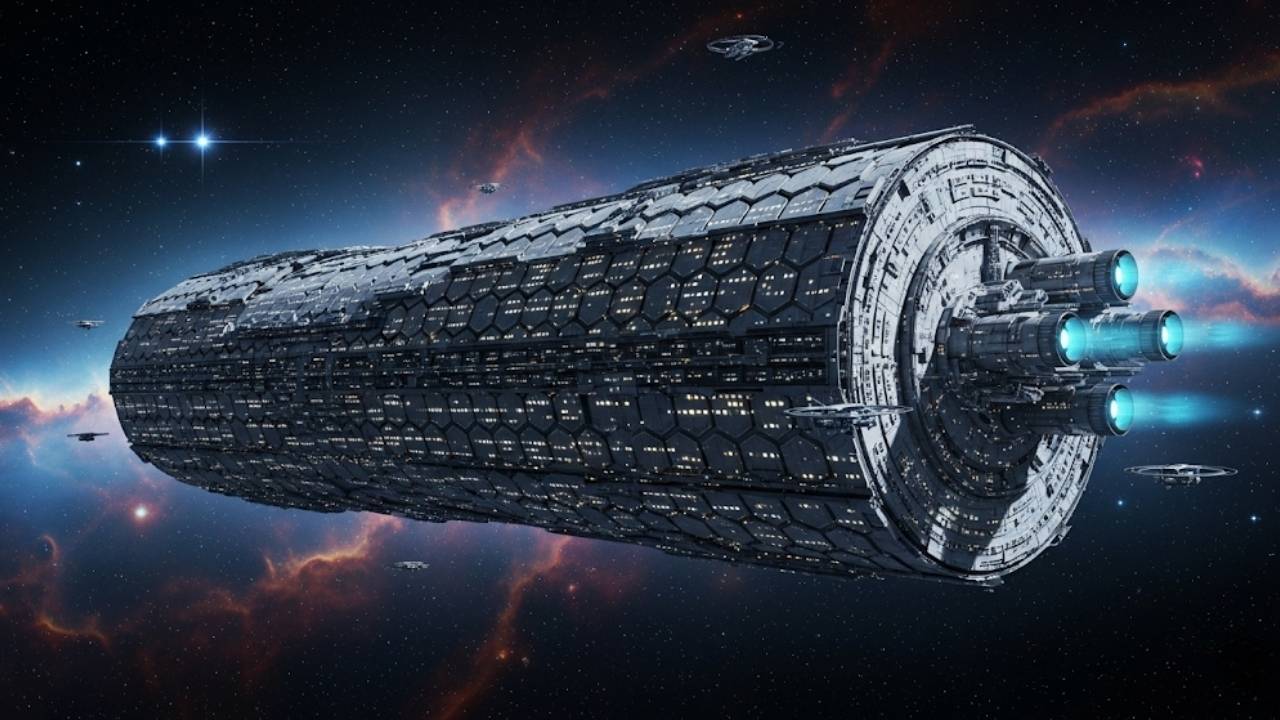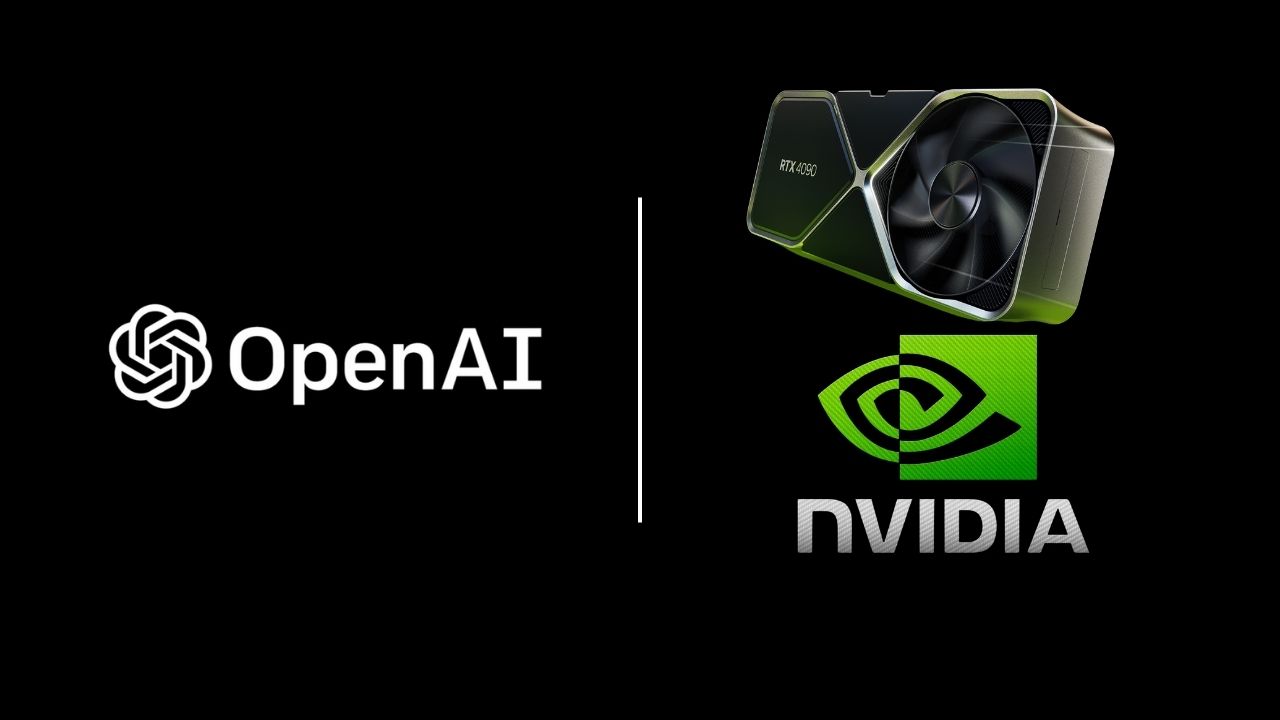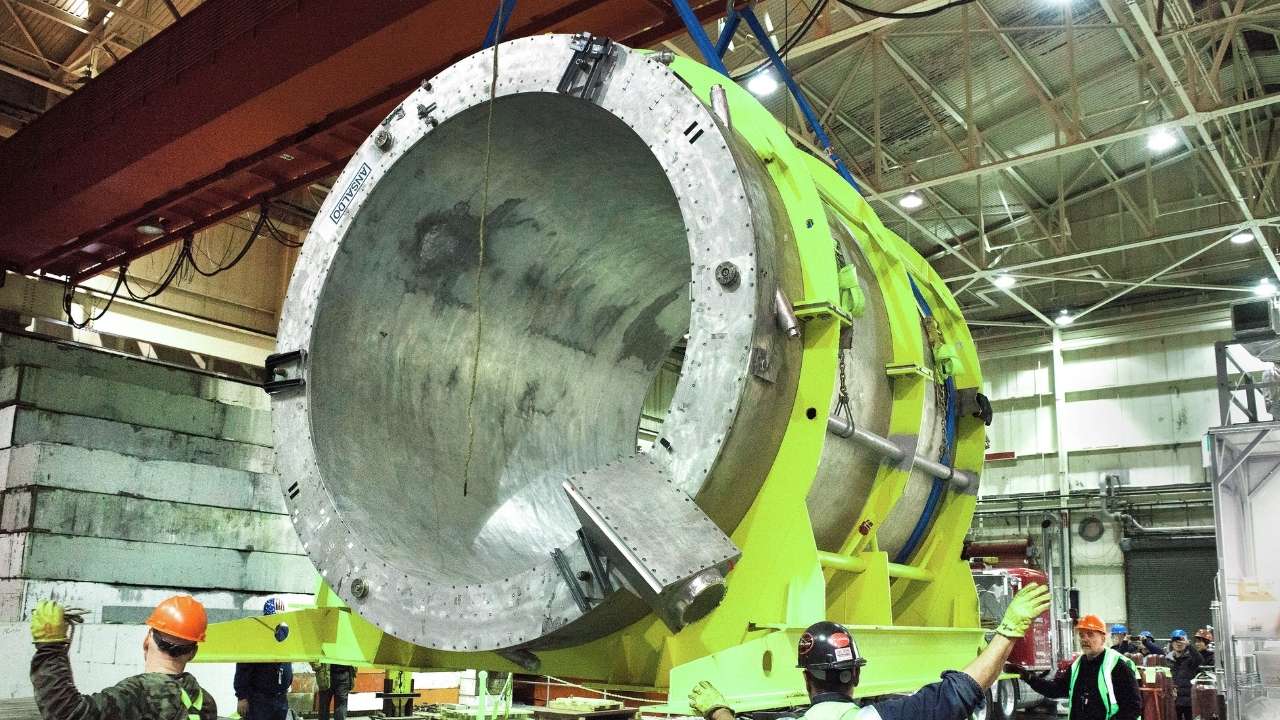The interstellar object 3I/ATLAS has recently captured the attention of astronomers worldwide as the third known visitor from beyond our Solar System. Unlike typical comets and asteroids that orbit our Sun, 3I/ATLAS travels on a high-speed, hyperbolic path, meaning it is just passing through the Solar System and originated from somewhere else in the galaxy. This exciting discovery opens a unique window to learn more about the building blocks of planetary systems far beyond our own.
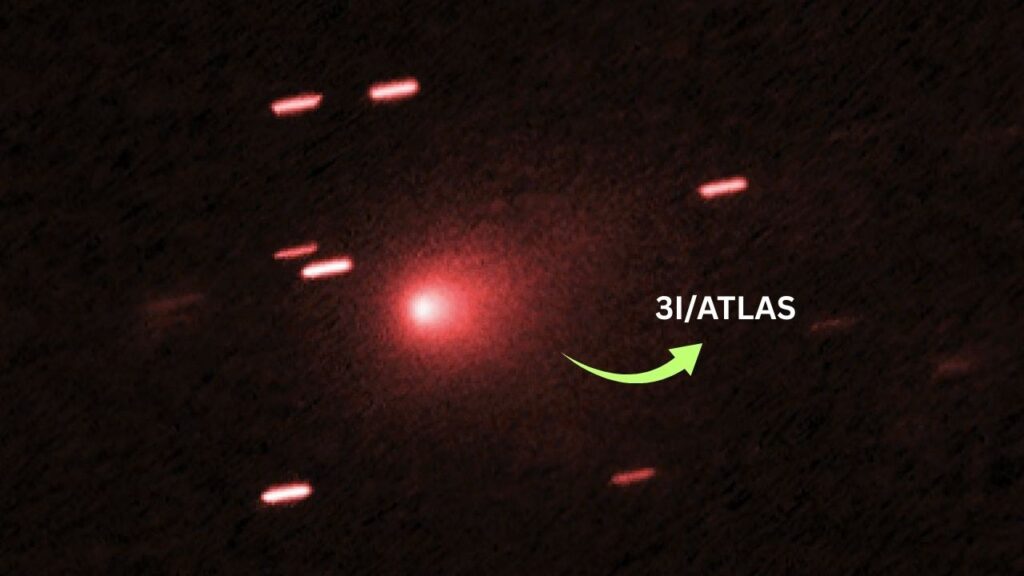
Exploring 3I/ATLAS helps us understand what materials form in other star systems and offers clues about mysterious cosmic processes that shaped our universe. In this article, we’ll break down the science behind 3I/ATLAS, explain what makes it different, and why astronomers are eager to learn more about this cosmic traveler.
3I/ATLAS
| Feature | Details |
|---|---|
| Type | Interstellar comet |
| Discovery | July 1, 2025, by ATLAS telescope, Chile |
| Size | Nucleus diameter estimated between 0.32 to 5.6 km (most likely <1 km) |
| Speed | Enters Solar System at ~58 km/s (faster than previous visitors 1I/ʻOumuamua & 2I/Borisov) |
| Orbit | Hyperbolic trajectory, eccentricity ~6.14 (extremely high) |
| Dust emission | Yes, but unusual dust patterns, suggesting comet-like activity with low gas production |
| Age estimate | Possibly around 7 billion years old, older than our Solar System |
| Significance | Offers rare opportunity to study extrasolar material; clues to distant planetary systems |
| Official NASA page | Learn more from NASA’s official resources |
The discovery of 3I/ATLAS, the third confirmed interstellar object, enriches our understanding of the cosmos by providing a rare sample of material formed far beyond our Solar System. While it shows cometary features through dust and ice activity, its unique behavior makes it an intriguing mystery for astronomers, blending familiar comet activity with new, unexplored traits.
Studying 3I/ATLAS helps decode the chemical and physical secrets of distant planetary systems and how such ancient objects survive over billions of years. As it glides through our celestial neighborhood at incredible speed, scientists will continue tracking and analyzing it — deepening human knowledge of interstellar science, one cosmic visitor at a time.
What Is 3I/ATLAS?
3I/ATLAS is an interstellar object (ISO), meaning it originated outside our Solar System. Discovered by the Asteroid Terrestrial-impact Last Alert System (ATLAS) telescope stationed in Chile, it was first observed on July 1, 2025, when it was far beyond Jupiter’s orbit, at about 4.5 astronomical units (AU) from the Sun (1 AU = the distance from Earth to the Sun, about 150 million kilometers).
Unlike most objects in our Solar System, which follow elliptical orbits bound by the Sun’s gravity, 3I/ATLAS follows a hyperbolic trajectory. This essentially means it’s moving so fast—about 58 km/s relative to the Sun—that it’s just passing through and will eventually leave the Solar System forever. In fact, this speed is even faster than previous interstellar visitors like 1I/ʻOumuamua and 2I/Borisov, making it the fastest and most energetic ISO seen so far.
The Comet-Like Behavior of 3I/ATLAS
One of the fascinating features of 3I/ATLAS is that it behaves somewhat like a comet. Comets are icy bodies that develop a coma (a cloud of gas and dust) and sometimes a tail when they get close enough to the Sun for their ices to sublimate (turn from solid to gas).
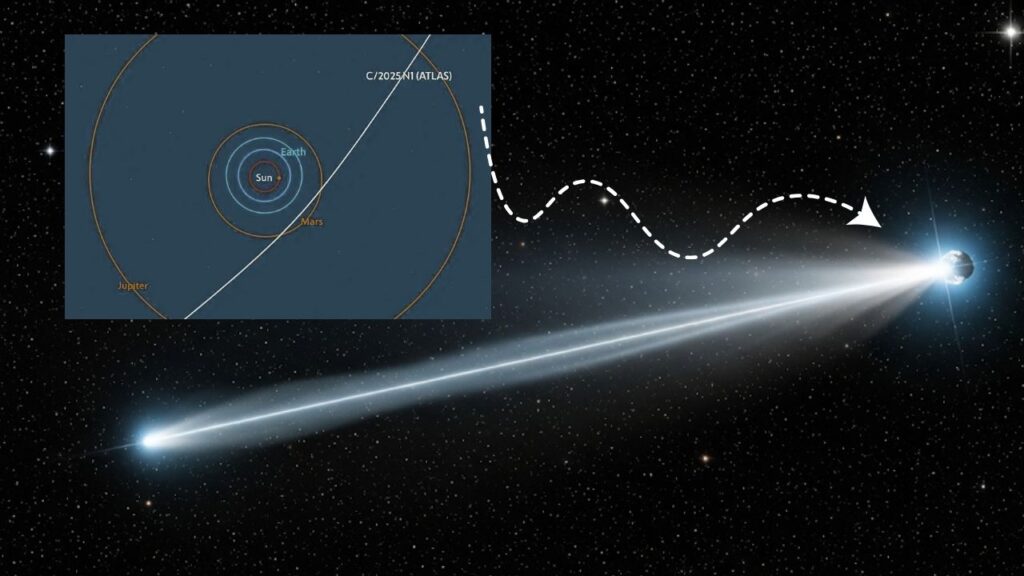
3I/ATLAS has shown a visible coma, indicating dust and ice particles around its nucleus. However, astronomers note that the dust patterns and gas emissions are atypical compared to classic comets. The dust is being released at a low rate (about 0.1 to 1.0 kg per second) and follows unusual dispersed patterns differing from typical comet tails which trail behind the comet.
This suggests that sublimation-driven activity and dust emission are happening but not in the familiar way seen in Solar System comets. The object’s rotation, its small nucleus size (less than 1 km likely), and its unique physical and chemical makeup contribute to these unusual dust signatures.
Why Is 3I/ATLAS Important?
3I/ATLAS offers an extraordinary chance to study material formed outside our Solar System. Scientists estimate that this object could be about 7 billion years old, making it potentially older than our 4.6-billion-year-old Solar System. This means it may carry ancient material from another star system and epoch, giving us clues about planetary formation, composition, and evolution beyond our cosmic neighborhood.
Scientifically, observing 3I/ATLAS helps answer questions such as:
- What are the building blocks of planetary systems around other stars?
- How do interstellar bodies form and evolve?
- Could complex organic molecules or ices exist in deep space for billions of years?
How Do Scientists Study 3I/ATLAS?
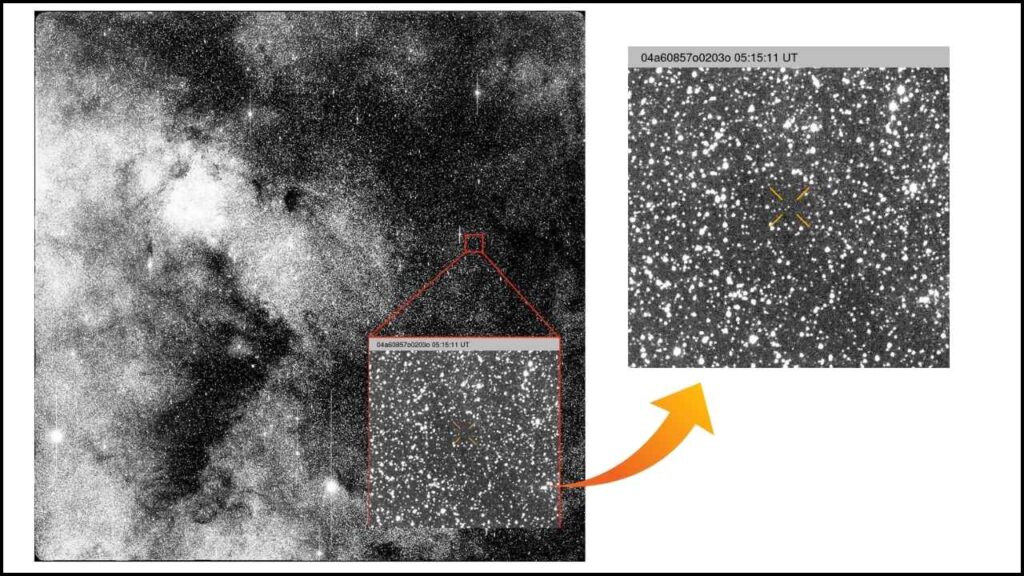
Astronomers use a combination of telescopes on Earth and space-based observatories to analyze 3I/ATLAS’s properties.
- Spectroscopy measures the light reflected and emitted by the object, revealing its surface composition. Observations show a reddish color spectrum similar to some objects far beyond Neptune, hinting at organics and processed carbon compounds.
- Imaging from the Hubble Space Telescope and ground-based telescopes measures the size, shape, and behavior of the coma and dust cloud.
- Orbit tracking helps calculate the exact path, velocity, and future trajectory of the object to predict its closest approach to the Sun and Earth.
Step-by-Step Guide: Observing and Understanding 3I/ATLAS
- Spotting the Object
Professional astronomers first detect new interstellar objects using wide-field survey telescopes like ATLAS that scan the night sky for moving objects. - Analyzing Motion and Orbit
Using precise measurements, scientists calculate the speed and trajectory to confirm that the object is not bound by the Sun’s gravity and is moving too fast for a standard Solar System orbit. - Measuring Physical Characteristics
Telescopes analyze brightness and light reflection to estimate the size of the nucleus and map dust and gas around it. - Spectral Analysis for Composition
By examining wavelengths of light, scientists identify materials on the surface, such as water ice, carbon compounds, or other elements. - Monitoring Dust and Gas Emissions
Ongoing observations track how much dust and gas is released as the object nears the Sun, helping to understand comet-like activity. - Predicting Future Path
Orbital calculations predict future positions, ensuring no collision risk with Earth, and plan for more detailed observations while visible.
Did Life Come From Outer Space? Scientists Say the Clues Are Adding Up
China’s Space Program Heats Up With 16 Launches and Mars Sample Return Plans
New Horizons Successfully Detects Distant Starlight in Deep Space Experiment
FAQs About 3I/ATLAS
Q1: Is 3I/ATLAS a comet or an asteroid?
3I/ATLAS exhibits comet-like behavior such as a dust coma, but it has unusual dust patterns and low gas emissions compared to typical comets. It is classified as an interstellar comet due to its activity but remains somewhat unusual.
Q2: How fast is 3I/ATLAS traveling?
It enters the Solar System at around 58 km/s, faster than the previous interstellar visitors 1I/ʻOumuamua (26 km/s) and 2I/Borisov (32 km/s).
Q3: How big is 3I/ATLAS?
Its nucleus size is uncertain but estimated between 0.32 and 5.6 km in diameter, with likely less than 1 km.
Q4: Will 3I/ATLAS hit Earth?
No, the closest approach is about 1.8 AU, which is well beyond the orbit of Earth, so there is no risk to our planet.
Q5: Why is 3I/ATLAS reddish in color?
Its red spectrum suggests a surface rich in complex organic compounds or irradiated carbon materials, similar to objects in the outer Solar System.

